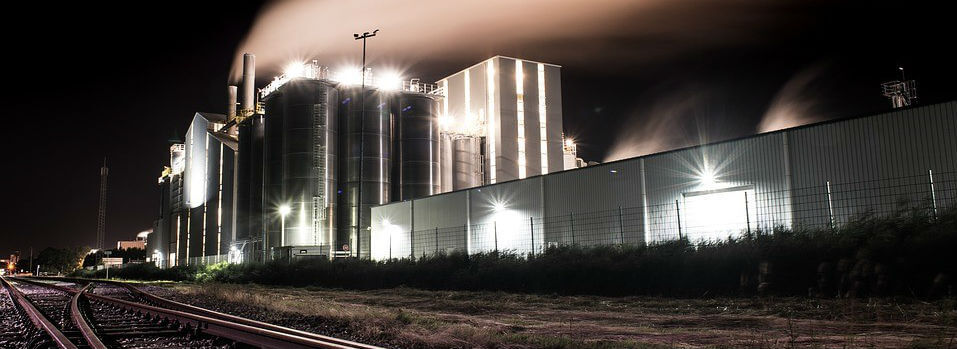
The widespread use of nitrogen in industrial processes makes it vital for operators to understand and employ the most efficient nitrogen generation techniques. While nitrogen occurs freely in nature, it is not readily available in its most useful form. Nitrogen is typically mixed with other component gases of air that may have an undesirable effect on industrial manufacturing processes.
Manufacturers have learned how to separate nitrogen and oxygen from atmospheric air to take advantage of nitrogen gas benefits. As a key player in the membrane and adsorption technological space, GENERON provides top quality nitrogen extraction solutions guaranteed to generate high purity nitrogen gas that meets all industrial requirements.
Why Pursue Nitrogen Production from Air?
Nitrogen in its diatomic form is abundant in nature as a major component of air. Nitrogen constitutes approximately 78% (by volume) of air. This makes it a free, readily available source for nitrogen – eliminating the need for complex chemical synthesis.
How is nitrogen separated for industrial use? Extracting nitrogen from air is possible by forcing ambient air through several types of generation processes.
How to Separate Nitrogen from Air
There are three standard methods used to extract nitrogen from air listed below:
Cryogenic distillation
Pressure swing adsorption
Membrane nitrogen generation
All three techniques can be used to produce high purity nitrogen for industrial use.
Cryogenic Distillation
This specialized fractional distillation technique produces high-purity nitrogen. However, this is one of the more complicated examples of how to extract nitrogen from air.
The process involves pulling ambient air into the distillation setup using a compression device. The compressed air is then cooled to about 10°C before being passed through a series of filters to eliminate moisture, oil, water vapor, and other contaminants.
Once the air has been cleaned, it is channeled through a heat exchanger to an expansion engine. The rapid expansion of the compressed gas within the engine will cause its temperature to fall below its condensation point (approximately -195.8°C within 1 atmosphere of pressure) and liquefy. Once liquefaction is achieved, a high purity fraction of nitrogen is distilled out of the air and channeled to storage units.
Mechanical Nitrogen Generation
Mechanical methods for nitrogen separation exploit the different physical properties of component gases of air to achieve nitrogen extraction. Compared to fractional distillation, mechanical nitrogen separation is a less complicated example of how to obtain nitrogen gas from air.
These techniques typically involve one of two processes:
Pressure swing adsorption nitrogen generation
Membrane nitrogen generation
These processes depend on the differential speed of travel and adsorption by membranes and molecular sieves to generate nitrogen.
Pressure Swing Adsorption
Extracting nitrogen from air using pressure swing adsorption technology is based on the preferential adsorption and desorption of oxygen and other gaseous contaminants by a molecular carbon sieve housed within two adsorptive-desorptive towers.
The procedure involves two stages which are coordinated simultaneously.
Adsorption removes oxygen, vapor, and other impurities from a stream of pressurized air allowing nitrogen to flow through to a collecting/ storage unit. This process will continue until the molecular sieve within the adsorptive tower is completely saturated.
Desorption is a reversal of the adsorptive process that released trapped oxygen from the sieve material within a desorption tower. This process will regenerate the molecular sieve in readiness for a new cycle of adsorption.
Membrane Nitrogen Generation
Membrane nitrogen generation uses hollow-fiber membranes to separate the constituent gases in air. The membrane surface is uniquely shaped into hollow fibers that increase the surface area for more rapid permeation.
The process involves pulling atmospheric air into the generator, compressing it, and passing it through a series of filters before gas separation. Once compressed, the air is channeled through a high-efficiency filter to remove water vapor and other particulate impurities.
The cleaner dried air is then exposed to an activated carbon scrubber that removes any remaining particulate or gaseous contaminants. After exposure to the membranes, a nitrogen-rich gas stream can be collected for industrial uses.
Membrane nitrogen generation components include:
Feed filter coalescers
Immersion heaters
Activated carbon filters
Particulate filters
Contact the membrane nitrogen generator manufacturers today at GENERON for a quote!
Benefits of Generating Nitrogen from Air
Extracting nitrogen from air has various benefits. The most significant advantages of generating nitrogen from air are listed below:
The raw material is air which is readily available in all environments and locations
The energy required for generation is limited to only the air compressor power supply in mechanical generation methods
GENERON® Nitrogen Generators Are the Solution You’ve Been Looking For
Over the last four decades, GENERON has remained committed to providing its customers with the most efficient nitrogen generation solutions. Our services are targeted at achieving maximal industrial productivity while remaining cost-effective.
Our nitrogen generators incorporate the latest in membrane and adsorption technology which makes them uniquely suited to a broad range of industrial applications.
Contact us today for a quote or for more information about the nitrogen generation services we offer.






